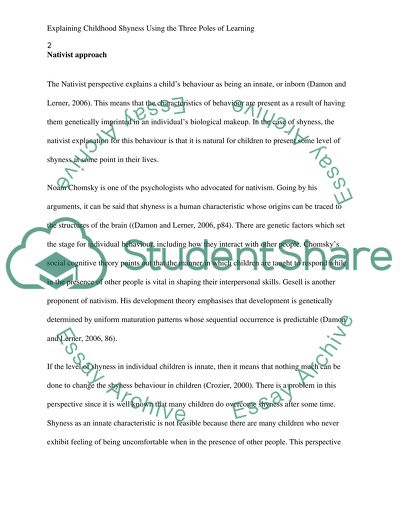Cite this document
(“Explaining Childhood Shyness Using the Three Poles of Learning Essay”, n.d.)
Retrieved from https://studentshare.org/psychology/1406947-explaining-childhood-shyness-using-the-three-poles-of-learning
Retrieved from https://studentshare.org/psychology/1406947-explaining-childhood-shyness-using-the-three-poles-of-learning
(Explaining Childhood Shyness Using the Three Poles of Learning Essay)
https://studentshare.org/psychology/1406947-explaining-childhood-shyness-using-the-three-poles-of-learning.
https://studentshare.org/psychology/1406947-explaining-childhood-shyness-using-the-three-poles-of-learning.
“Explaining Childhood Shyness Using the Three Poles of Learning Essay”, n.d. https://studentshare.org/psychology/1406947-explaining-childhood-shyness-using-the-three-poles-of-learning.


